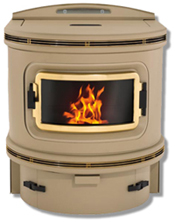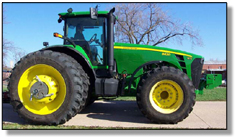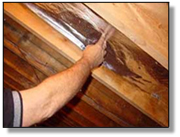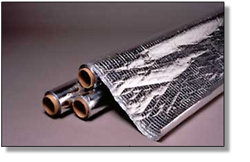Questions and Answers...
5% Dollar and Energy Saving Loans
The Nebraska Energy Quarterly features questions asked about 5% Dollar and Energy Saving Loans.
Loan forms may be obtained from participating lenders, the Nebraska Energy Office, or the agency's web site by clicking on the “Loan Forms” button above.
Loan forms may be obtained from participating lenders, the Nebraska Energy Office, or the agency's web site by clicking on the “Loan Forms” button above.
Energy Efficiency Mortgages, also called EEMs, may allow for lower interest rates, if homes are built to certain efficiency standards. You may want to check with your lender about getting an Energy Efficiency Mortgage through FHA, Fannie Mae or Freddie Mac.
If you would like to submit an application, you would need to complete loan application Form 32, Energy Saving Improvement Analysis, and Form 33 Energy Billing History. Instructions for these application forms are detailed in Steps to Obtain a Low-Interest Loan Using an Energy Saving Improvement Analysis.
 You will need to submit either an Annual Fuel Utilization Efficiency, or a Steady State Thermal Efficiency report for the new unit, from a third party qualified to do such tests. The advertised combustion efficiency of 99.7 percent is only a measure of how much of the fuel is turned into heat within the unit and says nothing about the amount of heat being provided to the home. A common fireplace can have a combustion efficiency of near 90 percent while the efficiency of heat transferred to the home may be as low as 15 percent — 85 percent of the heat goes up the chimney.
You will need to submit either an Annual Fuel Utilization Efficiency, or a Steady State Thermal Efficiency report for the new unit, from a third party qualified to do such tests. The advertised combustion efficiency of 99.7 percent is only a measure of how much of the fuel is turned into heat within the unit and says nothing about the amount of heat being provided to the home. A common fireplace can have a combustion efficiency of near 90 percent while the efficiency of heat transferred to the home may be as low as 15 percent — 85 percent of the heat goes up the chimney.We see a number of advertisements for these type systems claiming a British thermal unit — Btu — content for corn at 504,000 Btus per bushel. This Btu content is called the higher heating value which is based on a laboratory test for a substance with all moisture removed. Clean corn at 15-15.5 percent moisture will have a Btu content of 380,000 Btu per bushel. Foreign matter, such as dust, pieces of cobs, leaves and stalk commonly found in off-the-farm corn will further reduce the Btu content of corn. You will need to use 380,000 Btu per bushel in your energy analysis.
A typical energy analysis calculation would be as follows:
- Current annual fuel costs: From copies of your most recent years bill for heating list the dollars you spent on fuel. $__________
- The price per unit of fuel: From your heating bills, find the price paid per unit of fuel (such as $1.00 per therm for natural gas, $1.30 per gallon for propane, $0.05 per kWh for electricity, $140 per cord for wood, etc.). $__________
- Annual Fuel Use: Divide your current annual fuel costs, line 1, by the price per unit of fuel, line 2, to find your annual units of fuel use (therms for natural gas, gallons for propane, kWh for electricity, cords for wood, etc.). __________
- Decimal Efficiency: In decimal form, list the efficiency of your current heating system. Divide percent Steady State Thermal efficiency or percentage AFUE by 100 percent, 80 percent AFUE = 0.80, 96 percent AFUE = 0.96. NOTE: Do NOT use combustion efficiencies! Combustion efficiencies are no measure of the amount of heat delivered to your home. Divide HSPF by 3.412 Btu/watt-hour, 9.0 HSPF = 2.64. NOTE: HSPF takes into account an average for backup heat — No conversion is needed for COP, 4.6 COP = 4.6, etc., use 0.99 for electric strip heat. __________
- Fuel units felt as heat: Multiply annual fuel use, line 3, by the decimal efficiency, line 4, to find the amount of heat that actually entered your home from your current heating system. __________
- Btu per unit of fuel: List the number of Btus per unit of fuel (100,000 Btus in a therm, 85,000 Btus in a gallon of propane, 3,412 Btus per kWh electricity, 18,000,000 Btus per cord of wood). __________
- Btus felt as heat: Multiply fuel units felt as heat, line 5, by Btu per unit of fuel, line 6, to find the amount of heat, in Btus, that entered your home and were felt as heat. __________
- Decimal efficiency of new unit: List the decimal efficiency of the stove you intend to purchase (80 percent AFUE = 0.80, 96 percent AFUE = 0.96, etc. NOTE — Do NOT use combustion efficiencies! If using a steady state thermal efficiency for the new unit, and you used AFUE, HSPF, or COP in line 4 above, you must deduct 5 to 10 percentage points from the steady state thermal efficiency of the new unit to get to an AFUE for an equal comparison, 85 percent steady state thermal efficiency would equal 75-80 percent AFUE = 0.75 to 0.80). __________
- Btus required by new unit: Divide the Btus felt as heat, line 7, by the decimal efficiency of the new unit, line 8, to find the Btu input that will be required by the new unit for an equal amount of heat in your home. __________
- Btu content of corn: Use 380,000 Btu/bushel for clean corn, or 380,000 Btu/bushel for corn with foreign matter, at 15-15.5 percent moisture content. (Do not use 504,000 Btu/bushel. This is a laboratory condition for zero percent moisture and clean corn). __________
- Annual bushels of corn required: Divide Btus required of new unit, line 9, by the Btu content of corn, line 10, to find the number of bushels of corn you will use for an equal amount of heat in your home. __________
- Price of corn: Obtain a quote for corn delivered to your home and list the price here. Use market price plus $0.20 elevator handling charge, or current market price if you are a producer, or loan value if market price is below loan value and you are a producer. $ __________
- Annual cost of heating with corn: Multiply the annual bushels of corn required, line 11, by the price of corn, line 12, to find the cost of heating with corn. $ __________
- Comparison: Subtract your annual cost of heating with corn, line 13, from your current annual fuel costs, line 1, to find if changing to corn heat will save you money. Note that if this number is negative, it will actually cost you more for corn heat. $ __________
If a project like this were to qualify for a loan, the applicant would need to complete Form 32 and Form 33 according to the instructions included in Steps to Obtain a Low Interest Loan Using an Energy Analysis.
 Projects of this type would be considered an “Other System” and would be required to show a 10 year simple payback. That means the calculated annual energy dollars saved would have to pay for the cost of the complete project in 10 years, without considering interest.
It is important to realize that this type of application, an Energy Analysis, is a fairly detailed examination of the proposed project.
Projects of this type would be considered an “Other System” and would be required to show a 10 year simple payback. That means the calculated annual energy dollars saved would have to pay for the cost of the complete project in 10 years, without considering interest.
It is important to realize that this type of application, an Energy Analysis, is a fairly detailed examination of the proposed project.The applicant would be required to provide supporting documentation and calculations for any energy savings claims. Here are some of the items that would be required as part of the analysis:
- Copy of actual fuel bills for the previous year.
- The number of hours per year the equipment is operated with an explanation of how this was arrived at, such as, "I owned the existing unit for 5 years and the hour meter shows 5,000 hours, so that means I average 1000 hours per year."
- Use of “like comparisons,” or proper adjustments for “like horsepower.” That means that a 40 horse tractor will use about half the fuel per hour that an 80 horse tractor would use, but the farmer would need to run the 40 horse for twice as many hours to accomplish the same tasks, so this would not result in a savings.
- The applicant must realize this is a replacement loan, and any old equipment must be sold for scrap or traded and cannot be kept, even for spare parts.
- Copies of other supporting documents, like third party fuel consumption curves for the new equipment.
- Complete model numbers of existing and proposed new equipment.
- Copy of bid for new equipment and quotes for sale or trade of old equipment.
- Detailed calculations showing how any claimed savings were reached.
 The Federal Trade Commission's R-value rule on radiant heat barriers states that manufacturers must use the R-values published in the ASHRAE Handbook of Fundamentals. Those R-values are only applicable when the radiant barrier is used in conjunction with a sealed air space.
The Federal Trade Commission's R-value rule on radiant heat barriers states that manufacturers must use the R-values published in the ASHRAE Handbook of Fundamentals. Those R-values are only applicable when the radiant barrier is used in conjunction with a sealed air space.  If the space a radiant barrier is placed in is not sealed, the air in that space will develop convective currents that negate the radiant effect. When ASHRAE defines a sealed air space, they are referring to a space comparable to the space between two panes of glass in a window, sealed air tight, and not home construction, which would not achieve this type of sealing. Radiant barriers are not eligible for the loan program for a number of reasons:
If the space a radiant barrier is placed in is not sealed, the air in that space will develop convective currents that negate the radiant effect. When ASHRAE defines a sealed air space, they are referring to a space comparable to the space between two panes of glass in a window, sealed air tight, and not home construction, which would not achieve this type of sealing. Radiant barriers are not eligible for the loan program for a number of reasons:
- In any given thickness of air space, a person can achieve a higher R-value by filling that space with insulation.
- For a radiant barrier to be effective, the air space where it is used must be very tightly sealed, and that is not typical of home or building construction.
- Once a radiant surface becomes dusty or dirty, the radiant effect is substantially reduced.